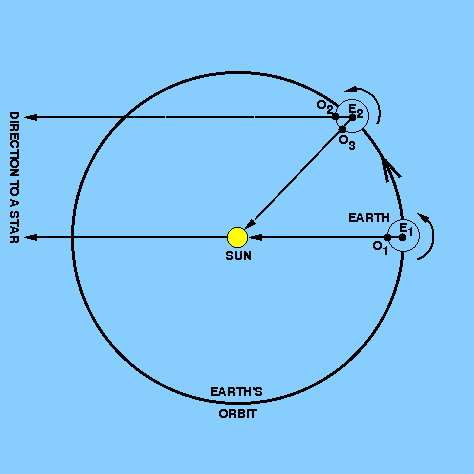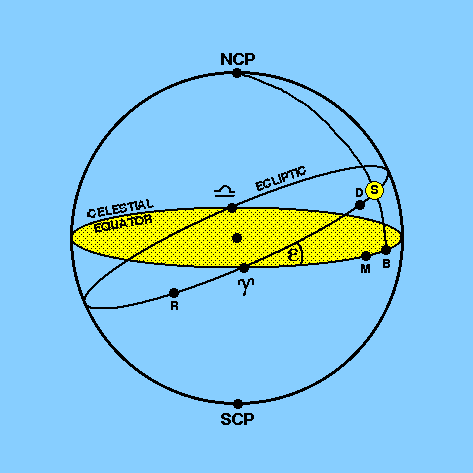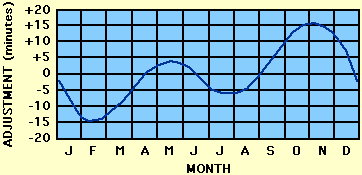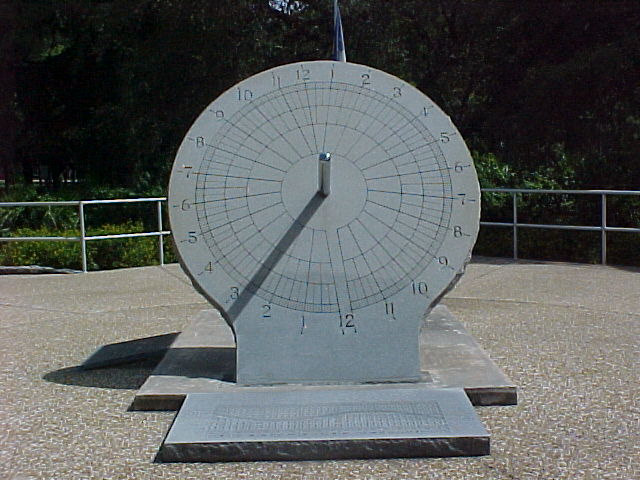|
1.
|
The Sun is said to be at perigee, R, when it is nearest to
the Earth. This
occurs once per year around January 1st. A fictitious body called the
dynamical mean sun, D, is introduced which starts off from perigee
with the Sun, moves along the ecliptic with the mean angular velocity of the
Sun and consequently returns to perigee at the same time as the Sun.
|
|
2.
|
When
this dynamical mean sun, moving in the ecliptic, reaches the first
point of Aries,  , the
mean sun, M, starts off along the celestial equator with the Sun's
mean angular velocity, returning to , the
mean sun, M, starts off along the celestial equator with the Sun's
mean angular velocity, returning to
 at the same time as the
dynamical mean sun. at the same time as the
dynamical mean sun.
|



